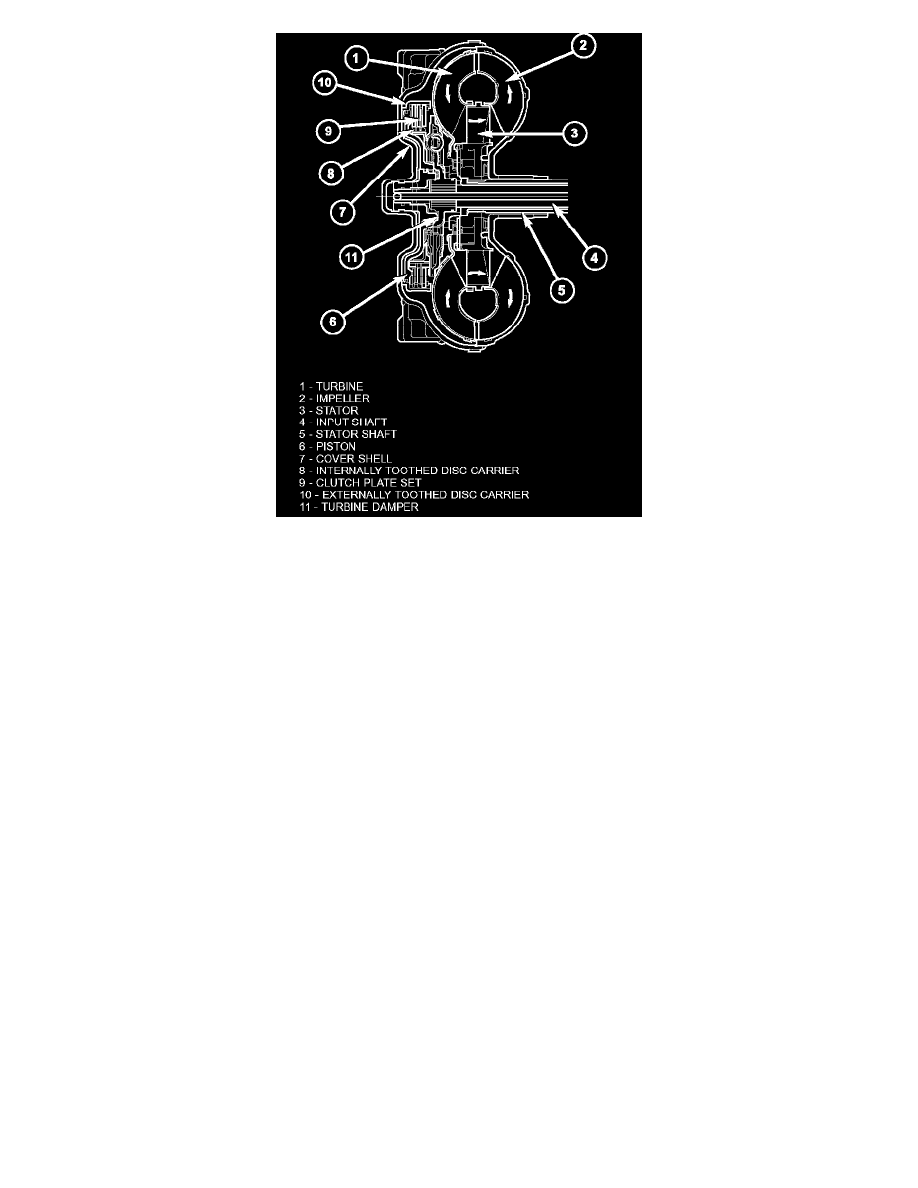Commander 2WD V6-3.7L VIN K (2006)

In a standard torque converter, the impeller (2) and turbine (1) are rotating at about the same speed and the stator (3) is freewheeling, providing no
torque multiplication. By applying the turbine's piston and friction material (9), a total converter engagement can be obtained. The result of this
engagement is a direct 1:1 mechanical link between the engine and the transmission.
The clutch can be engaged in second, third, fourth, and fifth gear ranges.
The TCM controls the torque converter by way of internal logic software. The programming of the software provides the TCM with control over the
torque converter solenoid. There are four output logic states that can be applied as follows:
-
No EMCC
-
Partial EMCC
-
Full EMCC
-
Gradual-to-no EMCC
NO EMCC
Under No EMCC conditions, the TCC Solenoid is OFF. There are several conditions that can result in NO EMCC operations. No EMCC can be
initiated due to a fault in the transmission or because the TCM does not see the need for EMCC under current driving conditions.
PARTIAL EMCC
Partial EMCC operation modulates the TCC Solenoid (duty cycle) to obtain partial torque converter clutch application. Partial EMCC operation is
maintained until Full EMCC is called for and actuated. During Partial EMCC some slip does occur. Partial EMCC will usually occur at low speeds,
low load and light throttle situations.
FULL EMCC
During Full EMCC operation, the TCM increases the TCC Solenoid duty cycle to full ON after Partial EMCC control brings the engine speed within
the desired slip range of transmission input speed relative to engine rpm.
GRADUAL-TO-NO EMCC
This operation is to soften the change from Full or Partial EMCC to No EMCC. This is done at mid-throttle by decreasing the TCC Solenoid duty
cycle.
